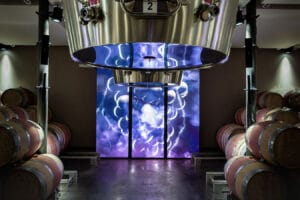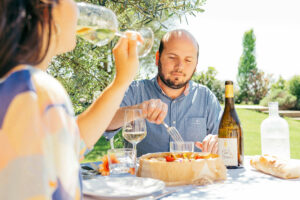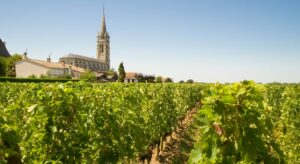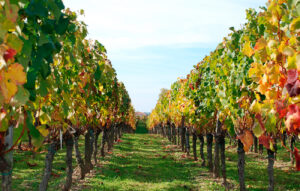The showcase vineyard plot
Most tours begin in the vineyard, right in front of a few selected vine rows. These “witness plots” help the guide explain the local terroir, grape varieties, planting density, soil work, and pruning calendar.
You might sample a fresh grape during the season, or learn to tell an early-ripening Merlot from a later-harvested Cabernet. A great insider question to ask: “What’s your planting density?”—a key indicator of quality.
Reception deck and sorting table
Next comes the reception area, a hive of activity during harvest. Here, grapes are received and sorted—either manually or using high-tech density-sorting systems.
You’ll likely see a vibrating sorting table, destemmer, conveyor belt, and a gravity-fed vat. Don’t hesitate to ask about the density sorter—it’s a fascinating blend of science and tradition.
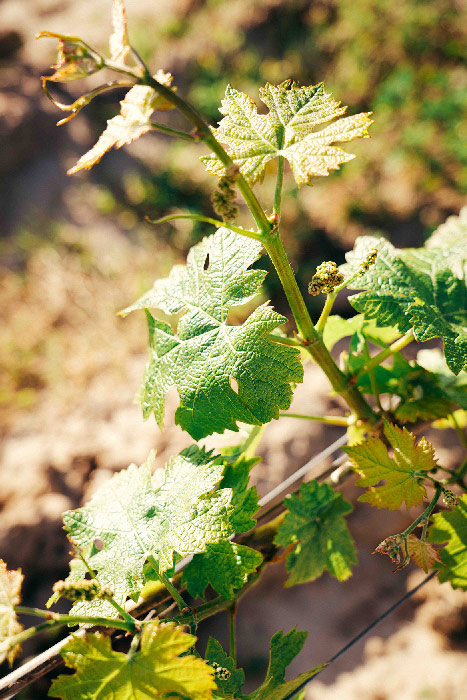
The vat room
In the vat room, the winemaker’s philosophy comes to life through the choice of fermentation vessels. Stainless steel for precision, tulip-shaped concrete for thermal inertia, or conical wooden vats for aromatic finesse.
At Château La Fleur de Boüard, 28 inverted tanks appear to float above the floor, bathed in cathedral-like light. Some estates ferment each vineyard parcel separately—look for numbered vats as a clue.
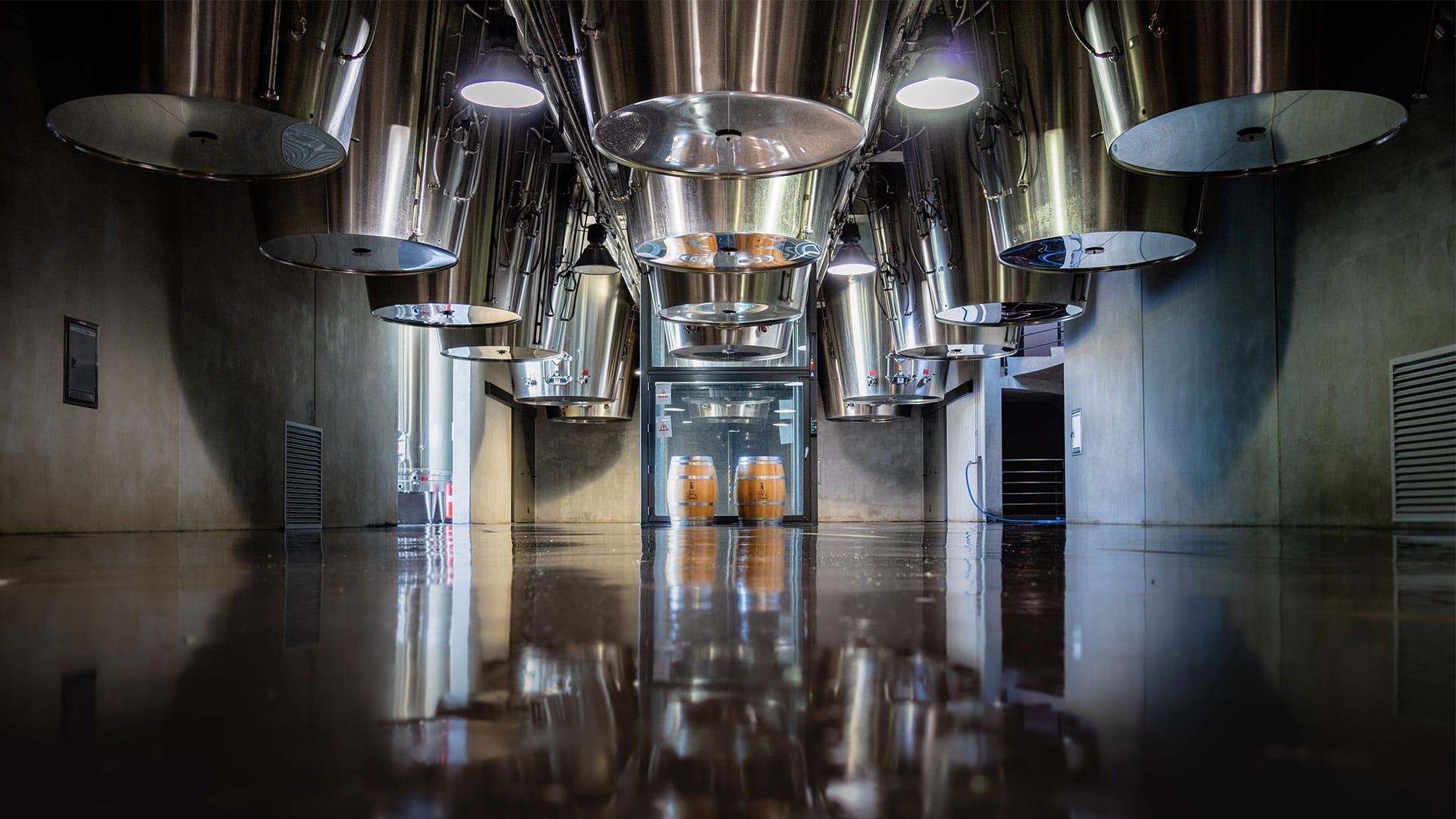
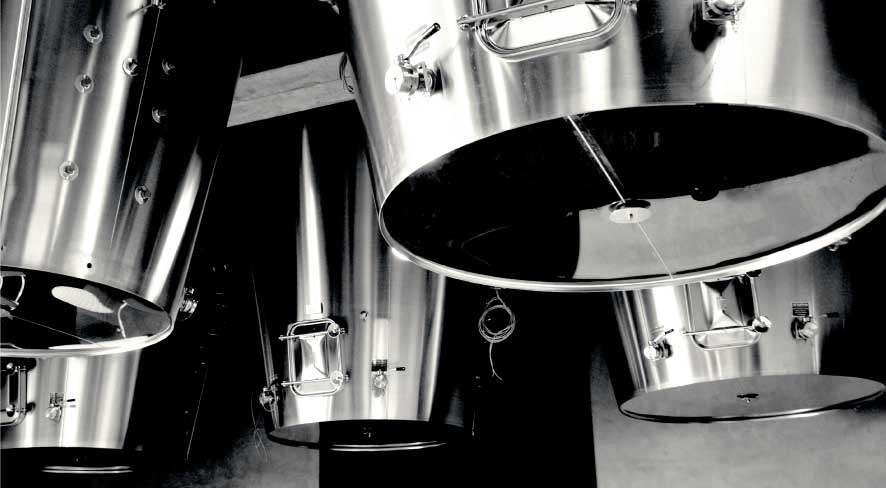
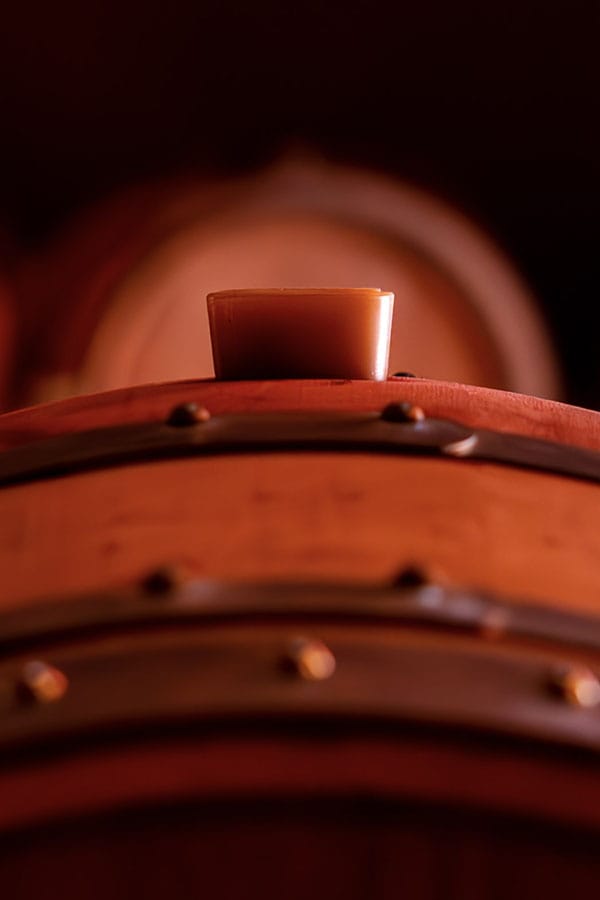
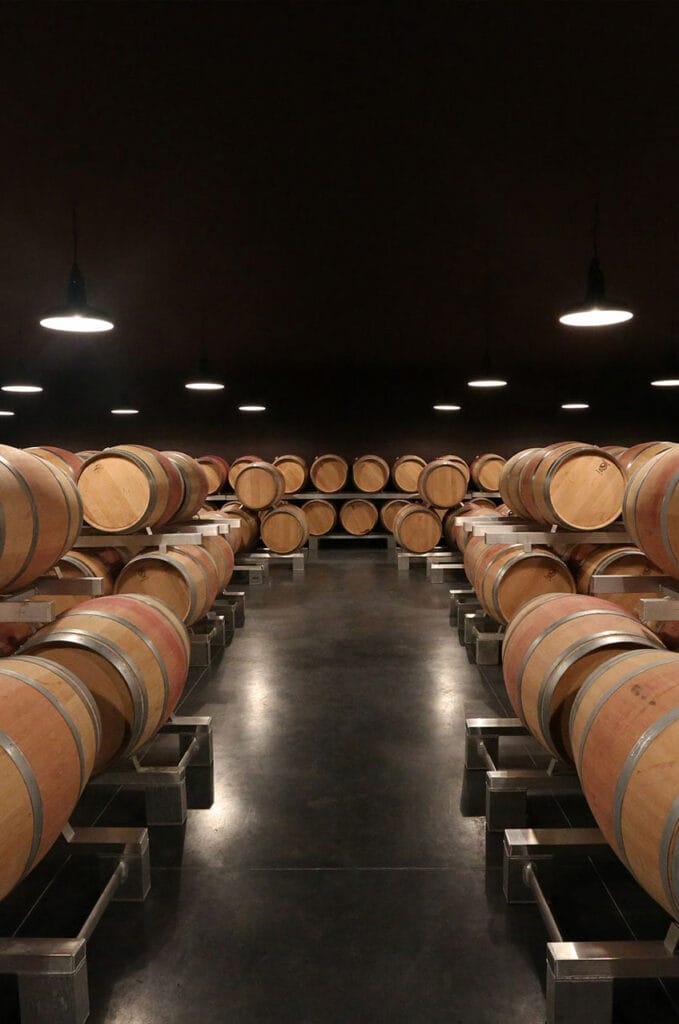
The barrel cellar
Then comes the aging cellar, where silence reigns. Rows of French oak barrels host the wine as it matures.
Your guide will explain barrel toasting, the proportion of new oak, aging duration, and techniques like bâtonnage. The toasted, vanilla-rich aromas leave a lasting impression. A good question to ask: what percentage of new oak is used? It reveals a lot about the wine’s intended style.
The vintage library
Some estates showcase a vintage library, where bottles dating back a century rest in cool darkness. It’s a chance to see old labels, rare formats, and hear stories of frosty harvests or legendary vintages.
If permitted, take a photo of the oldest label—it’s sure to be Instagram gold.
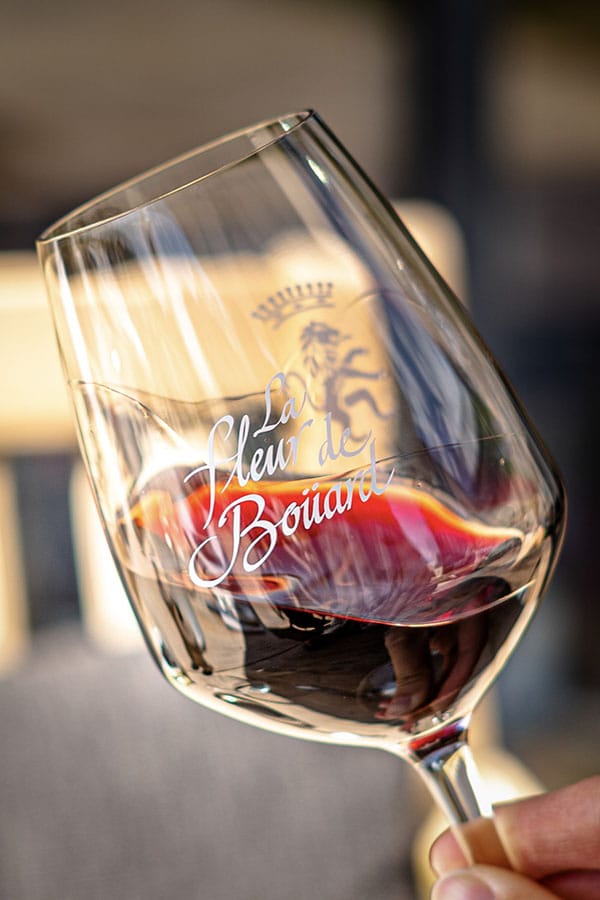
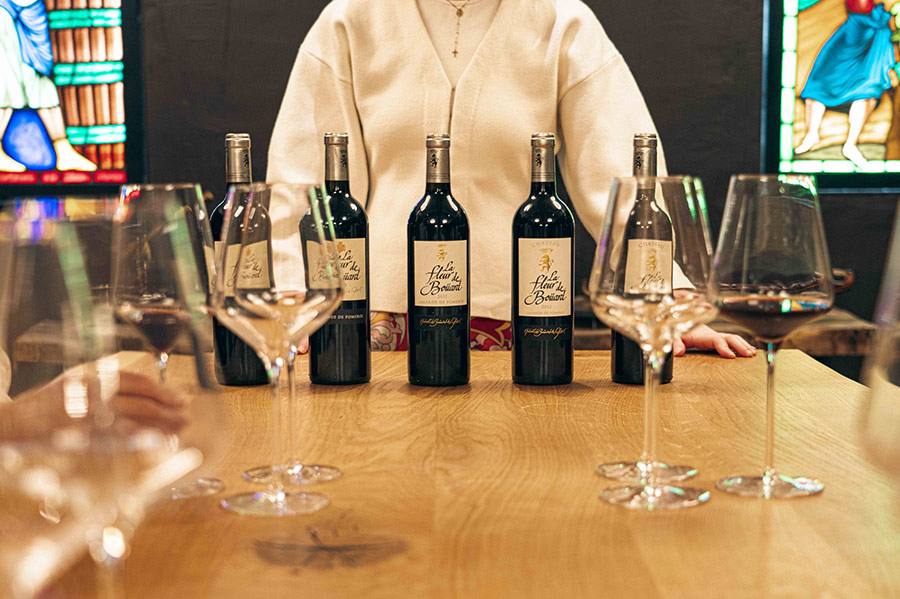
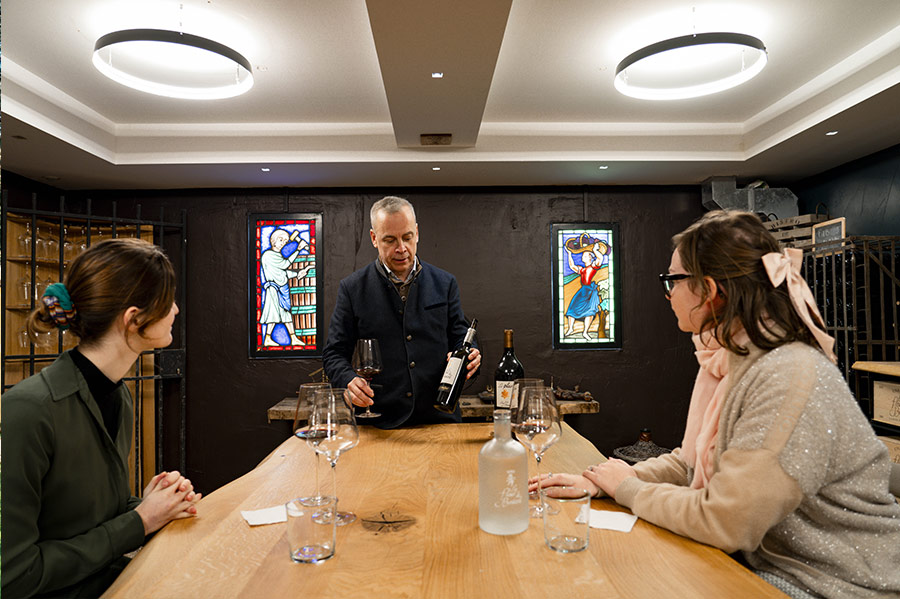
The tasting room
Finally, you reach the tasting room. This is the moment you’ve been waiting for. You’ll usually sample three to five wines to compare varietals, colors, or vintages.
The guide introduces the classic three-step tasting method: visual, aromatic, and gustatory. At Château La Fleur de Boüard, the panoramic tasting room offers stunning views of the vineyards and the glass-walled cellar. For a cleaner palate, rinse your glass with water—not wine—between tastings.
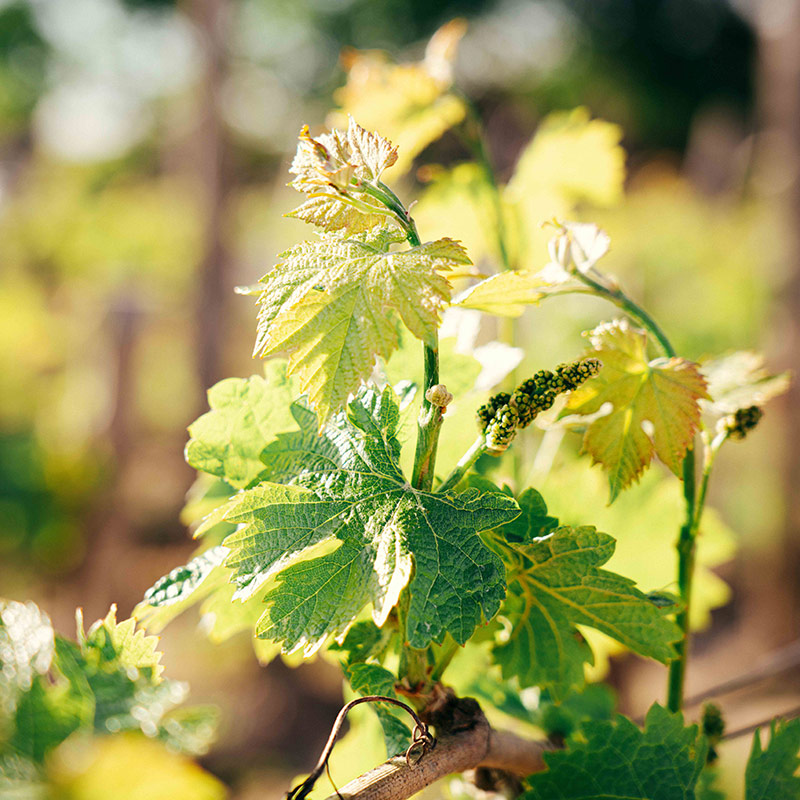
Tips for a successful visit
To get the most out of your visit, a few practical tips help. Always book in advance, especially in summer and during harvest season. Wear closed shoes for vineyard walks and damp cellar floors.
Avoid perfumes or chewing gum to preserve your sense of smell. And don’t be shy—ask questions! Guides love sharing their knowledge. Expect to pay €15–35 for a classic visit and €60–120 for premium workshops.
We answer your questions
How long is a winery tour?
Between 1 and 1.5 hours, depending on the number of wines tasted.
Are children allowed?
Yes. Many estates offer grape juice and kid-friendly activities.
Can you touch the barrels?
It’s discouraged for hygiene reasons, but non-flash photos are welcome.
Do I have to buy wine?
Purchases are optional, and wines can often be shipped to your home.
